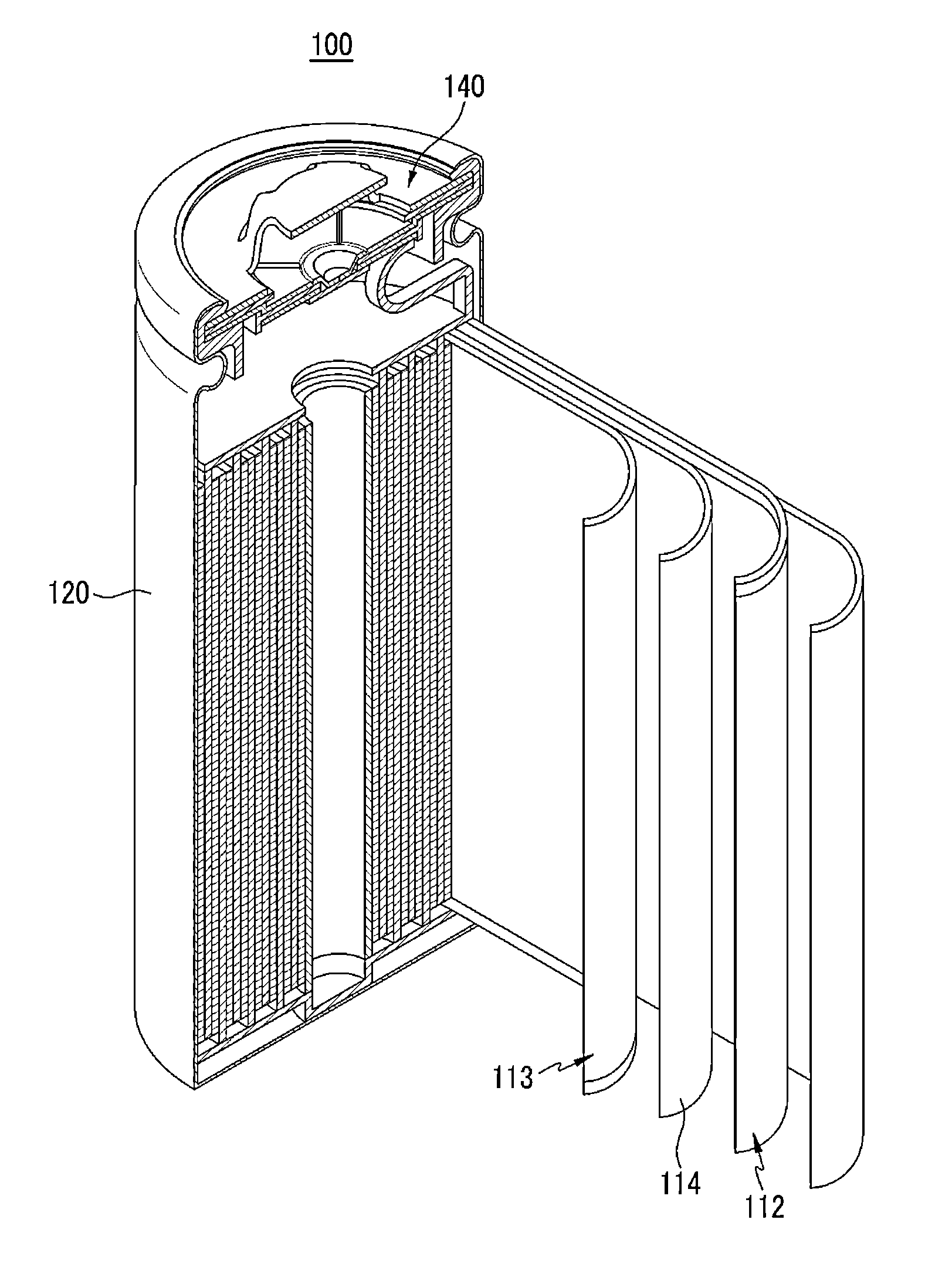Separator for lithium secondary battery and method for manufacturing same
- Summary
- Abstract
- Description
- Claims
- Application Information
AI Technical Summary
Benefits of technology
Problems solved by technology
Method used
Image
Examples
example 1
Fabrication of Separator for Rechargeable Lithium Battery Cell
[0255]A separator for a rechargeable lithium battery cell was fabricated to include a polymer including polybenzoxazole including a repeating unit represented by the following Chemical Formula 51 from polyhydroxyimide as shown in the following Reaction Scheme 1.
[0256](1) Preparation of Polyhydroxyimide
[0257]3.66 g (10 mmol) of 2,2-bis(3-amino-4-hydroxyphenyl)hexafluoropropane and 4.44 g (10 mmol) of 4,4′-(hexafluoroisopropylidene)diphthalic anhydride were added to 32.4 g of N-methylpyrrolidone (NMP), and the mixture was fervently agitated for 4 hours. Next, 32 ml of xylene as an azeotropic mixture was added to the agitated mixture, and the resulting mixture was solution-thermally imidized at 180° C. for 12 hours to remove water and the xylene therein, preparing polyhydroxyimide.
[0258](2) Fabrication of Separator for Rechargeable Lithium Battery Cell
[0259]A composition for forming a separator for a rechargeable lithium bat...
example 2
Fabrication of Separator for Rechargeable Lithium Battery Cell
[0284]A separator for a rechargeable lithium battery cell including polybenzoxazole including a repeating unit represented by the above Chemical Formula 51 was fabricated according to the same method as Example 1, except for heat-treating a non-woven fabric at 450° C. for 3 hours.
[0285]The separator for a rechargeable lithium battery cell had porosity of 89 volume %. In addition, the separator for a rechargeable lithium battery had a thickness of 105 μm. Furthermore, the separator had a thermal rearrangement rate of 100 mol %.
[0286]As a result of FT-IR analysis, the separator had polybenzoxazole characteristic bands of 1553 cm−1, 1480 cm−1 (C═N), and 1058 cm−1 (C—O), which were not found in polyhydroxyimide. In addition, the prepared polymer had a fractional free volume of 0.218 and interplanar spacing of 578.7 pm.
[0287]Furthermore, the separator had a full width at half maximum (FWHM) of 27.1 pm measured by using positro...
example 3
Fabrication of Separator for Rechargeable Lithium Battery Cell
[0288]A separator for a rechargeable lithium battery cell including polybenzoxazole including a repeating unit represented by the above Chemical Formula 51 was fabricated according to the same method as Example 1, except for heat-treating a non-woven fabric at 400° C. for 3 hours.
[0289]The separator for a rechargeable lithium battery cell had porosity of 85 volume %, a thickness of 30 μm, and a thermal rearrangement rate of 69 mol %.
[0290]As a result of FT-IR analysis, the separator had polybenzoxazole characteristic bands of 1553 cm−1, 1480 cm−1 (C═N), and 1058 cm−1 (C—O), which were not found in polyhydroxyimide. In addition, the prepared polymer had a fractional free volume of 0.204 and interplanar spacing of 567.6 pm.
[0291]Furthermore, the separator had a full width at half maximum (FWHM) of 21.1 pm measured using positron annihilation lifetime spectroscopy (PALS).
PUM
| Property | Measurement | Unit |
|---|---|---|
| Temperature | aaaaa | aaaaa |
| Temperature | aaaaa | aaaaa |
| Temperature | aaaaa | aaaaa |
Abstract
Description
Claims
Application Information
 Login to View More
Login to View More - R&D
- Intellectual Property
- Life Sciences
- Materials
- Tech Scout
- Unparalleled Data Quality
- Higher Quality Content
- 60% Fewer Hallucinations
Browse by: Latest US Patents, China's latest patents, Technical Efficacy Thesaurus, Application Domain, Technology Topic, Popular Technical Reports.
© 2025 PatSnap. All rights reserved.Legal|Privacy policy|Modern Slavery Act Transparency Statement|Sitemap|About US| Contact US: help@patsnap.com



